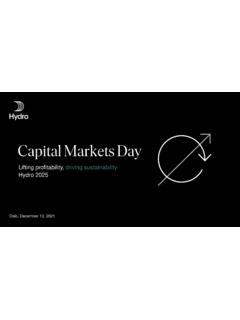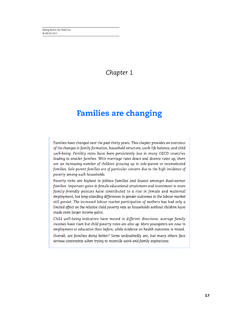Transcription of EARTO Paper: Capturing Official Data on the RTO Sector for ...
1 EARTO - European Association of Research and Technology Organisations AISBL Rue Joseph II 36-38, 1000 Brussels | +32-2 502 86 98 | | | BE0465567732 - RPM Brussels EARTO Paper: Capturing Official Data on the RTO Sector for a Better Understanding of the RD&I Ecosystem 23 December 2021 Contents 1. Introduction .. 2 2. Lack of Official OECD/EUROSTAT data on the RTO Sector .. 3 3. RTOs as one type of Public Research Organisations .. 4 4. List of criteria to define the RTO Sector .. 5 5. Recommendations towards OECD and EUROSTAT data on RTOs .. 6 Annex 1 - Official statistics on independent research institutes in Norway .. 9 Annex 2 - Criteria officially used at national level to define the RTO Sector .
2 11 2 EARTO - European Association of Research and Technology Organisations AISBL Rue Joseph II 36-38, 1000 Brussels | +32-2 502 86 98 | | | BE0465567732 - RPM Brussels 1. Introduction Overcoming the challenges that we jointly face at global level, such as generating shared prosperity, resilience and peace on a sustainable and healthy planet, and achieving the Sustainable Development Goals (SDGs) by 2030, requires ambitious and concrete actions. The importance of Research, Development and Innovation (RD&I) for achieving such goals has long been recognised, including by the United Nations and the OECD. RD&I policies can be a key enabler, if they are put in place in an efficient manner, adapted to the specificities of the different actors of the RD&I ecosystem to leverage their potential. For RD&I policies to be realistically adapted to the context and the needs of the Sector it affects, data-driven decision-making is crucially needed.
3 In its Communication on the Better Regulation Joining forces to make better laws, the EC stresses that Given this Commission s ambitious agenda and the unprecedented challenges we are facing, the need for strong analysis and reliable evidence is greater than ever . The EC adds that Scientific evidence is a cornerstone of better regulation, vital to establishing an accurate description of the problem, a real understanding of causality and therefore intervention logic; and to evaluate impact.. In its Regulatory policy Outlook 2021, the OECD highlights that enhanced oversight will be critical to ensure that decisions are based on the best available evidence, consider all relevant impacts and contribute to greater societal resilience . Today the OECD and EUROSTAT capture quite well the role of a few key actors in the RD&I ecosystem: government, including public funding for RD&I programmes, universities, including both their education and research activities, industry, including private investments in RD&I from small and large companies.
4 Data on these actors are easily accessible from the OECD and EUROSTAT databases, and can be used directly by policymakers for better evidence-based policy making, or by researchers to produce data-driven analysis of the different trends in the Sector that then can feed into the design of new policies. However, OECD and EUROSTAT data on Research and Technology Organisations (RTOs), is direly lacking (and even on Public Research Organisations PROs for that matter), despite the key role they play in the RD&I Ecosystem1 and in RD&I competitive programmes like EU Framework Programmes2, and the impact they deliver on the economy and for society3. RTOs are great supporters of EU RD&I policies thanks to their long experience of collaboration across the whole value chain, transferring knowledge and technology to the market.
5 RTOs are ideally suited to manage existing and build new ecosystems and clusters that are driven by value-chains. EARTO Recommendations: It is only with a complete picture of the RD&I ecosystem that policymakers can design evidence-based policies that are comprehensive, well targeted and effective. EARTO thus strongly encourages the OECD, EUROSTAT and the European Commission to rethink the way they categorise RD&I actors and to start collecting specific and robust data on the RTO Sector . EARTO has three recommendations to improve the classification of RD&I actors so that it more realistically reflects the RD&I Ecosystem: Recommendation 1: The Frascati Manual decision tree should be updated by adding a separate category for RTOs (or at least PROs), clearly distinguishing them from universities, industry, governments and other not-for-profit organisations.
6 Recommendation 2: Prior to the next update of the Frascati Manual, RTOs (or at least PROs) should be marked as specific units in Official statistics at national levels so that data on the whole RTO Sector can then be grouped at OECD/EUROSTAT levels. Recommendation 3: A dedicated Code for RTOs should be created in the European Nomenclature of Economic Activities (NACE) and in the United Nations International Standard Industrial Classification (ISIC). This key topic should also be discussed by national statistics offices and governments in the relevant settings at OECD and EUROSTAT levels, so that the approach can be coordinated. 1 See EARTO Recommendations for European RD&I policy Post-2020, 2019 2 See EARTO Paper on the Position of RTOs in the EU Framework Programmes, 2021 3 See EARTO Economic Footprint Study Impact of 9 European RTOs in 2016, and the presentations on The role of RTOs to deliver Impact on the economy and for society during the CONCORDi Conference 2021 3 EARTO - European Association of Research and Technology Organisations AISBL Rue Joseph II 36-38, 1000 Brussels | +32-2 502 86 98 | | | BE0465567732 - RPM Brussels 2.
7 Lack of Official OECD/EUROSTAT data on the RTO Sector Despite the importance of the RTO Sector in Europe, no Official data has been collected so far by Official institutions like the OECD or EUROSTAT. The OECD s methodology for collecting and using R&D statistics is detailed in the Frascati Manual, the guidelines for collecting and reporting data on research and experimental development, which has last been updated in 2015. This methodology is internationally recognised and widely used by institutions at all levels, and in particular by EUROSTAT and by most DGs of the European Commission. Such Manual includes definitions of basic concepts, data collection guidelines, and classifications for compiling R&D statistics. Following this Frascati Manual, the OECD and EUROSTAT both consider four main institutional sectors where R&D is performed: The business enterprise Sector (BES) The government Sector (GOV) The higher education Sector (HES) The private non-profit Sector (PNP) which covers non-market, private non-profit institutions (NPI) serving households ( the general public) and private individuals or households.
8 These provide individual or collective services to households either without charge or at prices that are not economically significant. They include NPIs such as professional or learned societies, charities, relief or aid agencies, trades unions, consumers associations, etc. The criteria for the classification of research actors are presented in the Frascati Manual decision-tree (Figure 1). However, if these criteria are strictly applied, a considerable number of borderline cases will necessarily be found. Several of these cases are used as examples in the Manual, among which are Research Institutes which is a term that has been introduced in the last 2015 update of the Frascati Manual. In other words: RTOs are not captured within their own institutional Sector , they have to be included in either the Government Sector or the Business Sector , and if they fit in none of the two, they end up in the Private non-profit Sector (de facto default category which includes all the organisations that do not fit within the above-mentioned ones).
9 RTOs often fall in-between these categories making them difficult to classify: they could be included in all the categories depending on the way the RD&I system is set-up nationally, or on the interpretation of the questions of the Frascati Manual decision tree ( does receiving basic funding and having a public mandate qualifies as being controlled by government ?). Figure 1: Decision-tree for sectoring R&D units (OECD - 2015) Figure 2: Classification of 33 RTOs based on the Frascati Decision Tree ( EARTO 2021) 4 EARTO - European Association of Research and Technology Organisations AISBL Rue Joseph II 36-38, 1000 Brussels | +32-2 502 86 98 | | | BE0465567732 - RPM Brussels As a consequence, RTOs are not included in the same category in the different OECD countries, which ineluctably tweaks the comparability of RD&I statistics across countries.
10 For instance, in countries where RTOs are classified in the business enterprise Sector , the governments would appear to much more finance the business enterprise Sector than in countries in which RTOs are classified in the government Sector . This also leads to question the value of the aggregated R&D data at OECD and EUROSTAT levels. Confronted with such cases, the Frascati Manual acknowledges that a single classification scheme may not be sufficient on its own to meet the varied and increasing range of user interests in R&D statistics ( page 87). It also adds that this approach should be kept in focus, particularly for international reporting, while allowing for a number of more flexible, complementary approaches ( page 89). Indeed, this map of the institutional sectors where R&D is performed is too simplistic to properly reflect the diversity of RD&I ecosystems, and it clearly fails to take into account the specific nature of RTOs.








